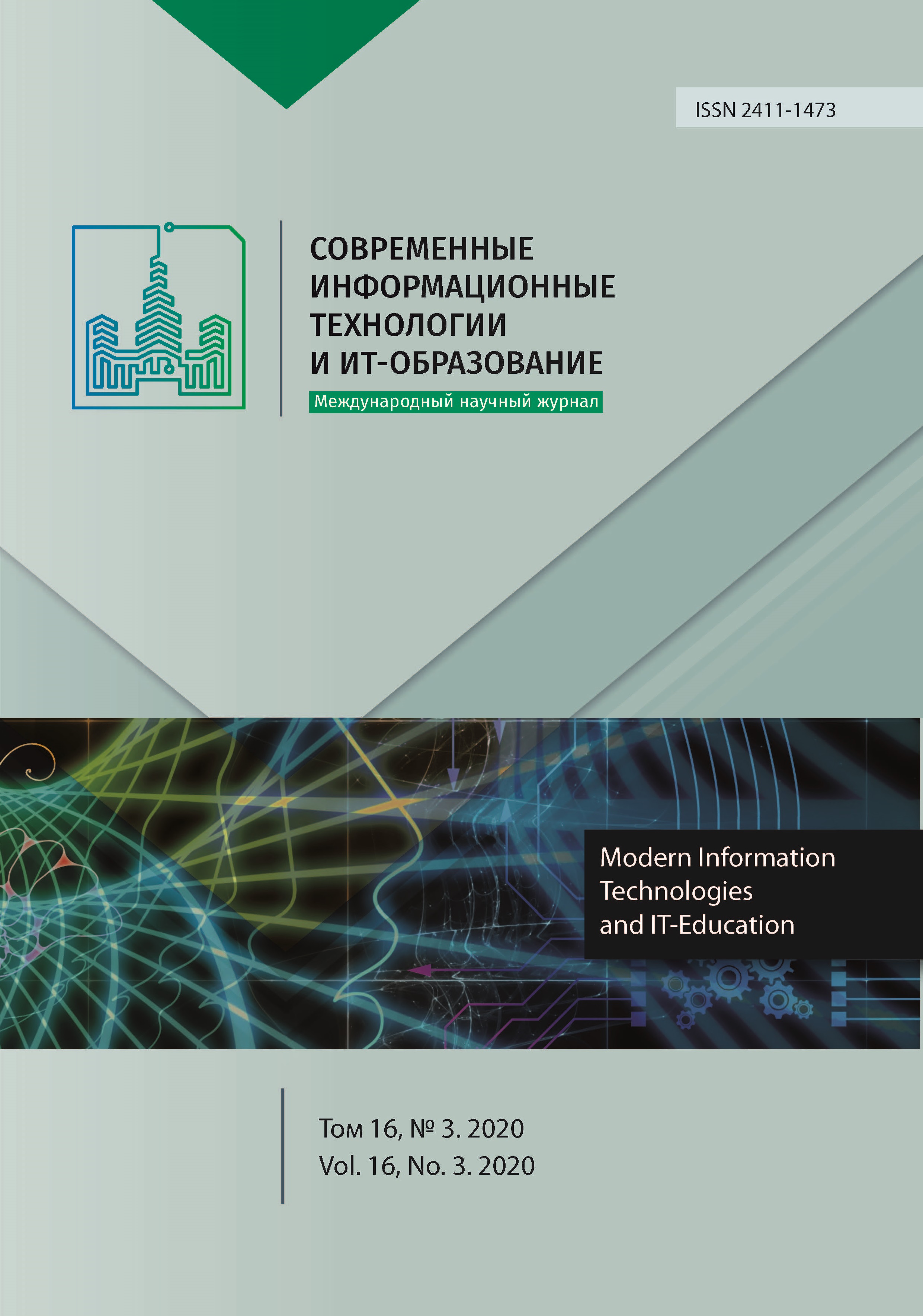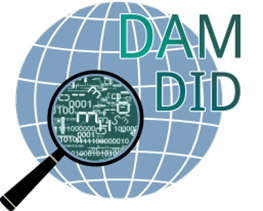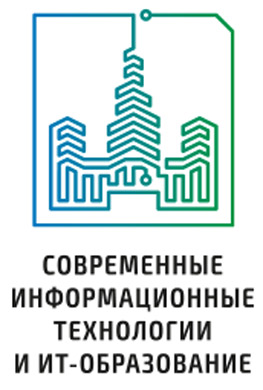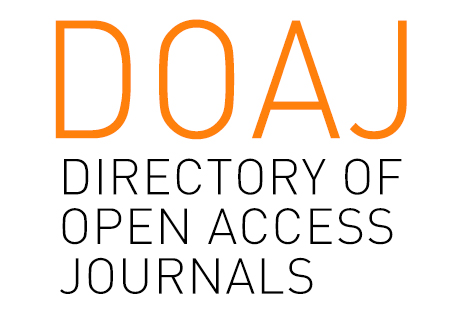Research of the Performance of Software-Defined Infrastructure in VANET Networks Based on Models of Hybrid Data Transmission Devices
Abstract
The development of new generation networks based on software-defied networks and their inclusion in the 5G stack requires new approaches to studying the operation of such networks. Most researchers trust frameworks for all low-level work, focusing on higher-level metrics. However, most simulation tools have a very limited ability to study software-defied hardware, especially packet latency. There is also insufficient attention paid to the models of virtual network devices, which behave differently from physical hardware and have different performance parameters and dependencies on external factors. All this led to the writing of this article, the purpose of which is to study the internal structure of the network equipment of the OmNET ++ modeling system, as well as create alternative models that take into account all the features of various software-defined equipment implementations. As a result of the study of the created models, an improvement in the simulation accuracy in terms of packet processing delay parameters is shown compared to the traditionally used building blocks of network equipment models.
References
[2] Herrnleben S., Rygielski P., Grohmann J., Eismann S., Hoßfeld T., Kounev S. Model-Based Performance Predictions for SDN-Based Networks: A Case Study. In: H. Hermanns (ed.) Measurement, Modelling and Evaluation of Computing Systems. MMB 2020. Lecture Notes in Computer Science. 2020; 12040:82-98. Springer, Cham. (In Eng.) DOI: https://doi.org/10.1007/978-3-030-43024-5_6
[3] Chaves L.J., Garcia I.C., Madeira E.R.M. OFSwitch13: Enhancing ns-3 with OpenFlow 1.3 Support. In: Proceedings of the Workshop on ns-3 (WNS3 '16). Association for Computing Machinery, New York, NY, USA; 2016. p. 33-40. (In Eng.) DOI: https://doi.org/10.1145/2915371.2915381
[4] Wang S. Comparison of SDN OpenFlow network simulator and emulators: EstiNet vs. Mininet. In: 2014 IEEE Symposium on Computers and Communications (ISCC). Funchal, Portugal; 2014. p. 1-6. (In Eng.) DOI: https://doi.org/10.1109/ISCC.2014.6912609
[5] Wang S., Chou C., Yang C. EstiNet openflow network simulator and emulator. IEEE Communications Magazine. 2013; 51(9):110-117. (In Eng.) DOI: https://doi.org/10.1109/MCOM.2013.6588659
[6] Erel M., Teoman E., Özçevik Y., Seçinti G., Canberk B. Scalability analysis and flow admission control in mininet-based SDN environment. In: 2015 IEEE Conference on Network Function Virtualization and Software Defined Network (NFV-SDN). San Francisco, CA, USA; 2015. p. 18-19. (In Eng.) DOI: https://doi.org/10.1109/NFV-SDN.2015.7387396
[7] Asadollahi S., Goswami B., Raoufy A.S., Domingos H.G.J. Scalability of software defined network on floodlight controller using OFNet. In: 2017 International Conference on Electrical, Electronics, Communication, Computer, and Optimization Techniques (ICEECCOT). Mysuru, India; 2017. p. 1-5. (In Eng.) DOI: https://doi.org/10.1109/ICEECCOT.2017.8284567
[8] Baldoni G., Lombardo A., Melita M., Micalizzi S., Rametta C., Vassallo A. An emulation framework for SDN-NFV based services. In: Proceedings of the Second International Conference on Internet of things, Data and Cloud Computing (ICC '17). Association for Computing Machinery, New York, NY, USA; 2017. Article 135. p. 1-8. (In Eng.) DOI: https://doi.org/10.1145/3018896.3036378
[9] Lee S., Ali J., Roh B. Performance Comparison of Software Defined Networking Simulators for Tactical Network: Mininet vs. OPNET. In: 2019 International Conference on Computing, Networking and Communications (ICNC). Honolulu, HI, USA; 2019. p. 197-202. (In Eng.) DOI: https://doi.org/10.1109/ICCNC.2019.8685572
[10] Salih M.A., Cosmas J., Zhang Y. OpenFlow 1.3 Extension for OMNeT++. In: 2015 IEEE International Conference on Computer and Information Technology; Ubiquitous Computing and Communications; Dependable, Autonomic and Secure Computing; Pervasive Intelligence and Computing. Liverpool, UK; 2015. p. 1632-1637. (In Eng.) DOI: https://doi.org/10.1109/CIT/IUCC/DASC/PICOM.2015.246
[11] Jia D., Sun J., Sharma A., Zheng Z., Liu B. Integrated simulation platform for conventional, connected and automated driving: A design from cyber–physical systems perspective. Transportation Research Part C: Emerging Technologies. 2021; 124:102984. (In Eng.) DOI: https://doi.org/10.1016/j.trc.2021.102984
[12] Sommer C., German R., Dressler F. Bidirectionally Coupled Network and Road Traffic Simulation for Improved IVC Analysis. IEEE Transactions on Mobile Computing. 2011; 10(1):3-15. (In Eng.) DOI: https://doi.org/10.1109/TMC.2010.133
[13] Amoozadeh M., Ching B., Chuah C.-N., Ghosal D., Zhang H.M. VENTOS: Vehicular Network Open Simulator with Hardware-in-the-Loop Support. Procedia Computer Science. 2019; 151:61-68. (In Eng.) DOI: https://doi.org/10.1016/j.procs.2019.04.012
[14] Nardini G., Stea G., Virdis A., Sabella D. Simu5G: A System-level Simulator for 5G Networks. In: Proceedings of the 10th International Conference on Simulation and Modeling Methodologies, Technologies and Applications. Volume 1: SIMULTECH. 2020. p. 68-80. (In Eng.) DOI: https://doi.org/10.5220/0009826400680080
[15] Shi X., Wang L., Zhang F., Zheng K., Mühlhäuser M., Liu Z. PABO: Mitigating congestion via packet bounce in data center networks. Computer Communications. 2019; 140-141:1-14. (In Eng.) DOI: https://doi.org/10.1016/j.comcom.2019.04.002
[16] Amarasinghe G., de Assunção M.D., Harwood A., Karunasekera S. ECSNeT++ : A simulator for distributed stream processing on edge and cloud environments. Future Generation Computer Systems. 2020; 111:401-418. (In Eng.) DOI: https://doi.org/10.1016/j.future.2019.11.014
[17] Sonmez C., Ozgovde A., Ersoy C. EdgeCloudSim: An environment for performance evaluation of Edge Computing systems. In: 2017 Second International Conference on Fog and Mobile Edge Computing (FMEC). Valencia, Spain; 2017. p. 39-44. (In Eng.) DOI: http://dx.doi.org/10.1109/FMEC.2017.7946405
[18] Klein D., Jarschel M. An OpenFlow Extension for the OMNeT++ INET Framework. In: Proceedings of the 6th International ICST Conference on Simulation Tools and Techniques (SimuTools '13). ICST, Brussels, BEL; 2013. p. 322-329. (In Eng.) DOI: http://dx.doi.org/10.4108/icst.simutools.2013.251722
[19] Sudheera K.L.K., Ma M., Ali G.G.M.N., Han Joo Chong P. Delay efficient software defined networking based architecture for vehicular networks. In: 2016 IEEE International Conference on Communication Systems (ICCS). Shenzhen, China; 2016. p. 1-6. (In Eng.) DOI: https://doi.org/10.1109/ICCS.2016.7833564
[20] Shi W., Cao J., Zhang Q., Li Y., Xu L. Edge Computing: Vision and Challenges. IEEE Internet of Things Journal. 2016; 3(5):637-646. (In Eng.) DOI: https://doi.org/10.1109/JIOT.2016.2579198
[21] Sierszeń A., Przyłucki S. Software-Defined Automatization of Virtual Local Area Network Load Balancing in a Virtual Environment. In: M. Choraś, R. Choraś (ed.) Image Processing and Communications Challenges 10. IP&C 2018. Advances in Intelligent Systems and Computing. 2019; 892:151-160. Springer, Cham. (In Eng.) DOI: https://doi.org/10.1007/978-3-030-03658-4_18
[22] Varga A. A Practical Introduction to the OMNeT++ Simulation Framework. In: Virdis A., Kirsche M. (ed.) Recent Advances in Network Simulation. EAI/Springer Innovations in Communication and Computing. Springer, Cham; 2019. (In Eng.) DOI: https://doi.org/10.1007/978-3-030-12842-5_1
[23] Nkenyereye L., Nkenyereye L., Adhi Tama B., Reddy A.G., Song J-S. Software-Defined Vehicular Cloud Networks: Architecture, Applications and Virtual Machine Migration. Sensors. 2020; 20(4):1092. (In Eng.) DOI: https://doi.org/10.3390/s20041092
[24] Jiau M., Huang S., Hwang J., Vasilakos A.V. Multimedia Services in Cloud-Based Vehicular Networks. IEEE Intelligent Transportation Systems Magazine. 2015; 7(3):62-79. (In Eng.) DOI: https://doi.org/10.1109/MITS.2015.2417974
[25] Bera S., Misra S., Vasilakos A.V. Software-Defined Networking for Internet of Things: A Survey. IEEE Internet of Things Journal. 2017; 4(6):1994-2008. (In Eng.) DOI: https://doi.org/10.1109/JIOT.2017.2746186

This work is licensed under a Creative Commons Attribution 4.0 International License.
Publication policy of the journal is based on traditional ethical principles of the Russian scientific periodicals and is built in terms of ethical norms of editors and publishers work stated in Code of Conduct and Best Practice Guidelines for Journal Editors and Code of Conduct for Journal Publishers, developed by the Committee on Publication Ethics (COPE). In the course of publishing editorial board of the journal is led by international rules for copyright protection, statutory regulations of the Russian Federation as well as international standards of publishing.
Authors publishing articles in this journal agree to the following: They retain copyright and grant the journal right of first publication of the work, which is automatically licensed under the Creative Commons Attribution License (CC BY license). Users can use, reuse and build upon the material published in this journal provided that such uses are fully attributed.













